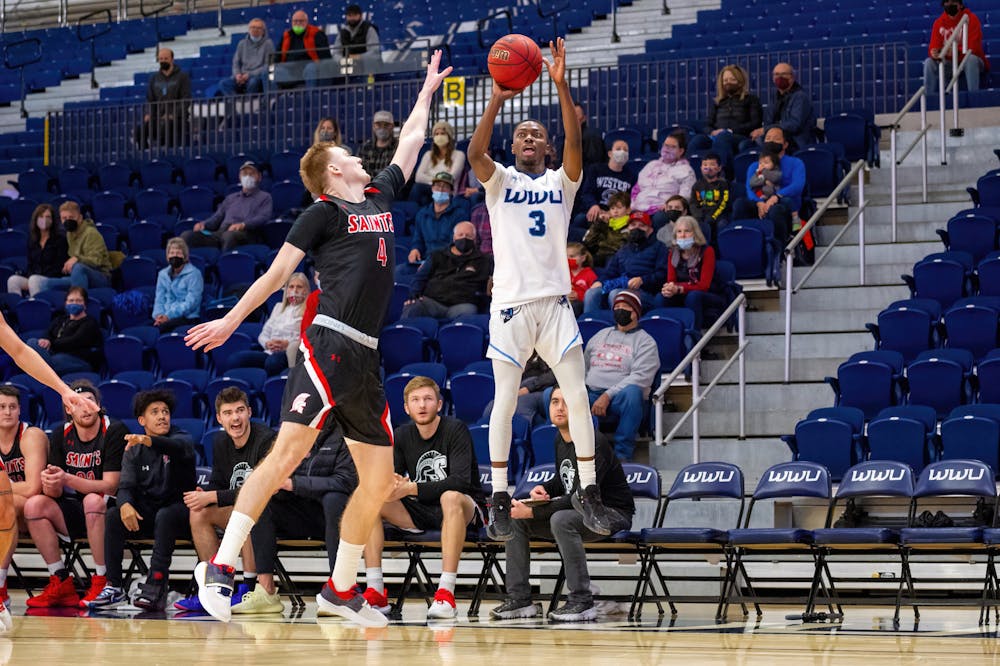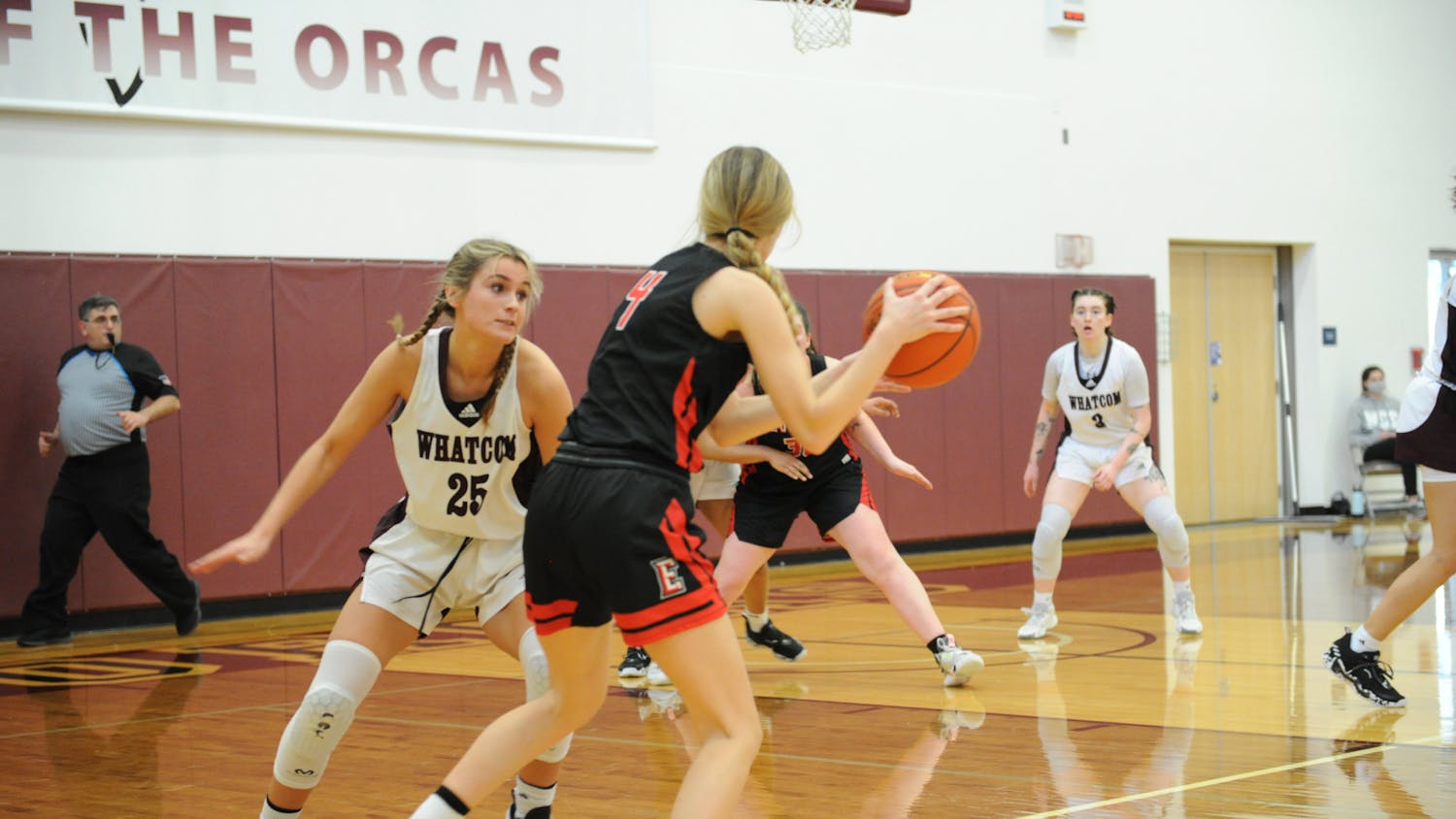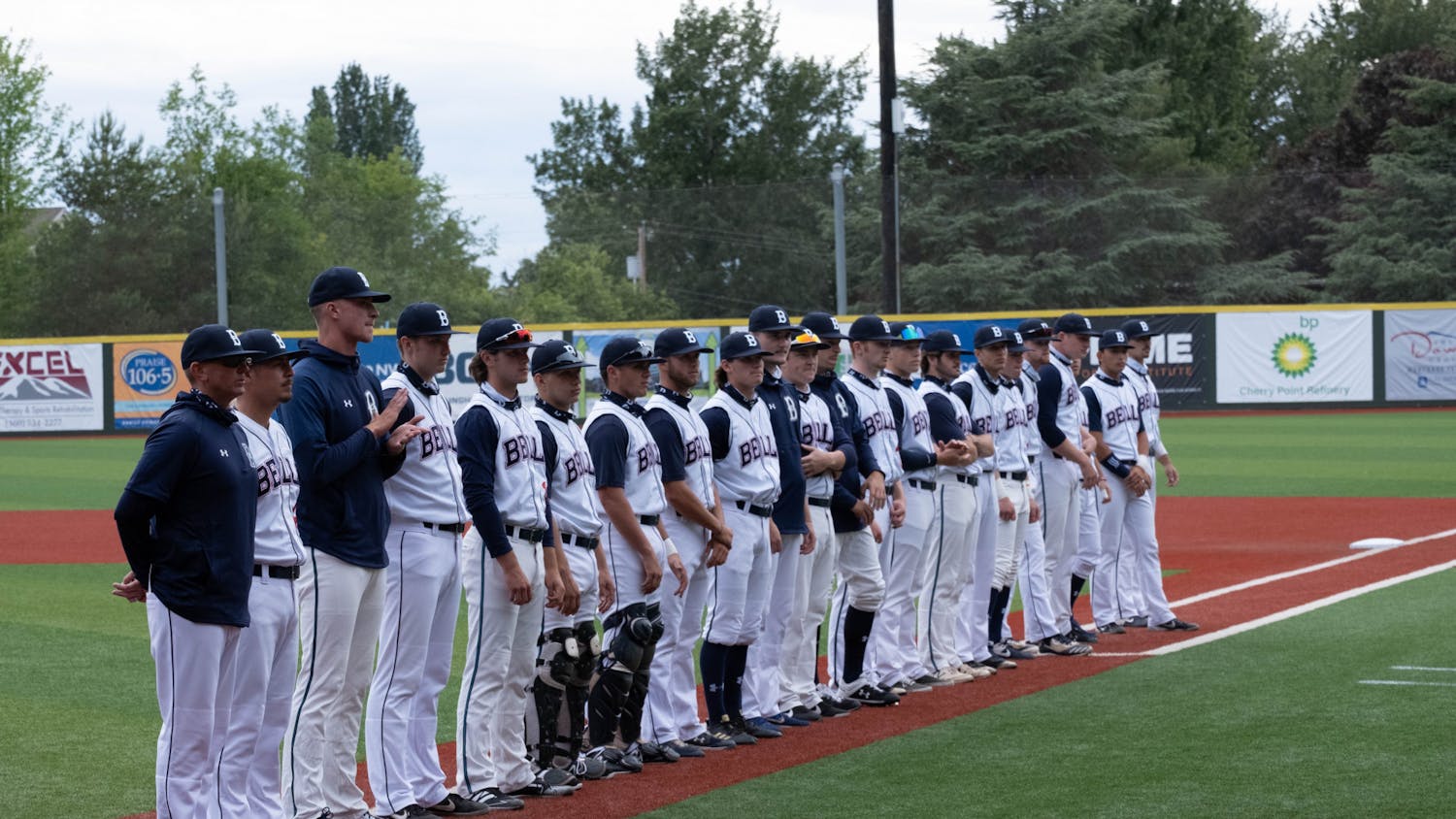How does an athlete play on a college team?
Do they get recruited in high school, attend college sports camps or try out once they are enrolled at their college? Do coaches watch athletes’ games, or do the athletes send their game films to the coaches instead? Is it beneficial to attend a community college first before going to a four-year university or is being recruited by a university right out of high school better?
Each coach and player at different levels will tell you the college recruitment process differs. Coaches look for specific characteristics in a prospective recruit: grades, personality, skill; and athletes look for specific things the college has to offer them: academics, successes of the athletic programs, athletic aid.
According to Next College Student Athlete, athletes can choose to play at five different levels: NCAA Division I, NCAA Division II, NCAA Division III, NAIA and NJCAA (JUCO). With several options for an athlete, the steps to getting recruited are very complex with recruiting calendars, interaction periods, athletic aid and National Letters of Intent.
Here’s a synopsis of the college recruitment process from coaches and players of several sports at Western Washington University who compete at the NCAA Division II level.
Men’s Basketball
Tony Dominguez, Vikings men’s head basketball coach, said his staff will go out and watch high school and junior college athletes perform at numerous events throughout the year, but athletes will also send emails and highlight videos.
Dominguez quoted former head coach Brad Jackson who told him years ago that recruiting was not an exact science because as a coach, you will never know how or where to find your next recruit.
Having a high-academic athlete who is dominant in the classroom and on the court is always a bonus, Dominguez said. He also seeks athletes who don’t have high GPAs but who are motivated to do well in the classroom and who have toughness, character and team-driven mentalities.
The difference between players coming out of high school and community college, he said, is experience level. Very rarely will he find fully-developed kids who are super strong and ready to play immediately. Most high school players haven’t grown into adult bodies yet, and it could take them two or three years to hit their peak, he said.
“For me, you’re recruiting for the family and relationship,” he said. “And that’s why [Western] has had two basketball coaches over the last 40 years because our mission is to help kids grow personally more than wins and losses, although we’re very competitive and we want to win at the highest level. I got into coaching and am continuing it for the mission of helping young men achieve their goals.”
Current junior guard Daniel Hornbuckle played at the University of Alaska Fairbanks for two and a half years, transferred to Portland Community College for the 2019-20 season and then was recruited last year by Western.
“For me, [the recruiting process] was showing the coaches my highlights,” Hornbuckle said. "I also played travel basketball where we would go to Las Vegas and play in front of college coaches as well. All my highlights are on YouTube, so coaches, if interested in me, would search my name and if they liked what they saw, [they] would reach out.”
He said a few schools were also interested in him after he left the University of Alaska Fairbanks. Western saw him play in Portland along with viewing his highlight reels. So when Western called, he said it was a no-brainer to commit knowing the Vikings were in the same conference as Fairbanks and were one of the better programs.
“Coach and I really hit it off quick,” he said. “No emails, it was just a bunch of phone calls between [us]. I was blessed and fortunate enough to receive a full-ride scholarship, so I committed to the school [and] signed a National Letter of Intent.”
Men’s and Women’s Soccer
Greg Brisbon, Vikings men’s head soccer coach, said his staff watch prospective athletes three to eight times with their club teams, at ID camps and their high school teams. Aside from skill, he looks at athletes’ academics, personalities and characters.
He said transfer students are generally more physically ready than high school players, but it is not always the case. Once he has a recruit he’s really interested in, his staff tries to have the recruit on campus for a visit so that more in-depth conversations can happen with both parties.
Vikings women’s head soccer coach Travis Connell said the team is constantly searching for talented student-athletes who can add quality to the program.
“Some players contact us and others we find by watching club or high school games,” he said. “Coaches recommend players and we notice some players at our soccer camps. We contact college kids who are in the transfer portal and sometimes players reach out to us wanting to transfer to our school.”
His staff first looks for prospects who must have talents such as athleticism, technical skills and decision making to play at the Division II level.
He said a player’s character and how they fit into the team culture are next, and they learn those personalities by watching recruits play, speaking with coaches, teachers, teammates and interacting with them during the visits to campus.
Men’s and Women’s Golf
Vikings men’s and women’s head golf coach Luke Bennett said an athlete’s performance in junior golf events is how they will get recruited to his team. Once that happens, he said it’s up to him to reach out to those players and them reaching out to him regardless if the process is done by phone, email or letter.
“I try to go to a handful of local events throughout the year to see multiple players play,” he said. “My hope is to keep our star local players local. Along with going to events, they send me playing resumes and videos of their golf games: driver swing, iron swing, bunker play and putting.”
In regards to recruits coming out of high school, he searches for passion for the game and talent.
“The juggling of college academics and golf is a lot,” he said. “It takes a driven individual to be able to balance them both. During the communication period, I will find out more information about their academics, passion for the game and work ethic – [which are] all key pieces to the process.”
As for recruits transferring from community colleges or other four-year universities, he looks for solid scores, good athletic action in their swings, ability to have good touch on and around the greens and good references from their previous coaches.
Another part of the recruiting process is campus visits. He said it gives him the opportunity to know the player and get a feel for their personality more. The prospective recruit, he said, is also given the opportunity to play with some of the current team members so that both parties can get acquainted with each other.
“The recruiting process for me starts June 15 after their sophomore year in high school,” he said. “Many times, players pop up on my radar before then. But that’s the official date on which I can contact them.”
Women’s Volleyball
Vikings women’s head volleyball coach Diane Flick-Williams said the recruiting process is different for everyone since some athletes reach out by email, are recommended by their high school or club coaches, attend camps, are noticed at club tournaments or other ways of being seen.
“We have had prospective student-athletes who we saw when they were eighth-graders, some we knew since birth and some not until their senior year,” she said. “But once our interest is piqued, we follow them throughout their high school and club season in whatever way the NCAA will allow.”
She also said there is a strong correlation between a prospective student-athlete’s grades and their ability to handle the time management required of a collegiate student-athlete. If the athlete was able to manage their academics with their club schedule and other interests, then they are better prepared for the varsity sport expectations, she said. However, if the athlete struggled in school, she said it’s important for her staff to see why before deciding on their academic preparedness for college.
As for high school and transfer students, she said her staff doesn’t look for anything different.
“Our first level of evaluation is their ability to play the game, their physicality to get better and their ability to learn,” she said. “Once those criteria are met, we spend the bulk of our time investigating what kind of person they are and would they be a good fit for our program culture and our university culture? It is vitally important for our success as a team and their success as an individual that this is a place where they can grow in all aspects of college athletics: academically, physically, socially, mentally, etc.”
Once a recruit is on her radar, she said they are brought to campus to experience the school and meet the team in person. Trying to communicate on Zoom or talking on the phone is not enough to accurately make a decision on committing to them, she said.
“[Recruits] come to campus on an official or unofficial visit and spend a day being a Western volleyball student-athlete,” she said. “They go to class, take a campus tour, eat in the dining hall with the team, meet with academic advisors and the coaching staff, observe a practice and take that experience home with them to decide if Western is a place where they would like to continue their college career.”
Women’s Rowing
What’s different about the Viking women’s rowing team is according to head coach John Fuchs, his staff only recruits current Western students.
He said there are open tryouts in the fall, and since many of the tryout candidates haven’t rowed before, his staff looks at fitness. For those who did row in high school, the staff evaluates fitness and skills.
“We don’t go out and try to find young women for the team during their high school years,” he said. “They come to us, [and] we offer an opportunity. It's one important factor [that] everyone on the team shares; they all came to Western to get their education, not to row. There was no guarantee they would make the team if they tried out, but they still attend here anyway. Everyone walks on.”
The college recruitment process is very complex. Both coaches and athletes have different criteria they use to evaluate whether the two would be a good fit to further the program’s success.
For more information on the college recruitment process, visit the NCAA, NAIA and NJCAA websites. Interested in the community college recruitment process? Read this article.

Taras McCurdie (he/him) is the sports editor for The Front this quarter. He is an aspiring sports journalist entering his final quarter at Western Washington University (WWU). Outside of school, you can find him freelancing for the Lynden Tribune, playing on the WWU club tennis team or running on the treadmill at the Rec Center. When chilling at night, he listens to throwback slow jams and ’90s hip-hop. You can reach him at tarasmccurdie.thefront@gmail.com.






